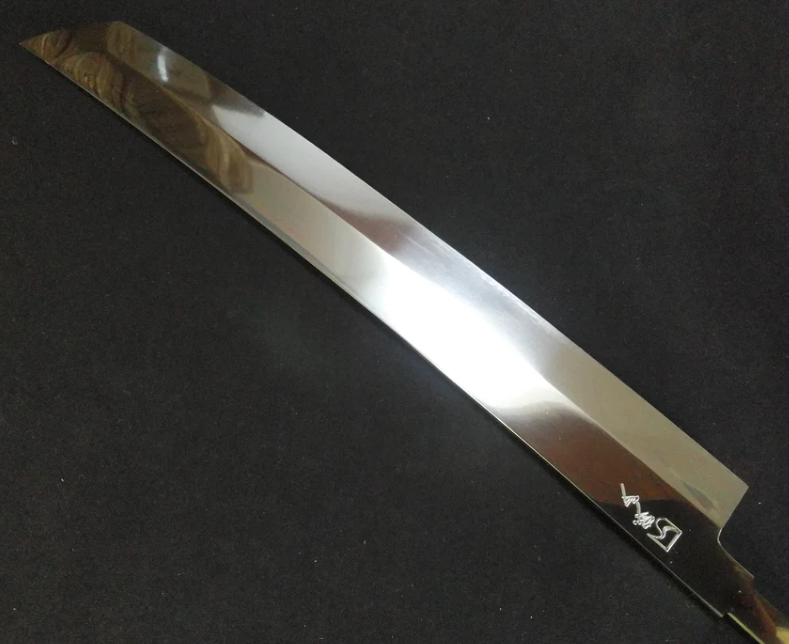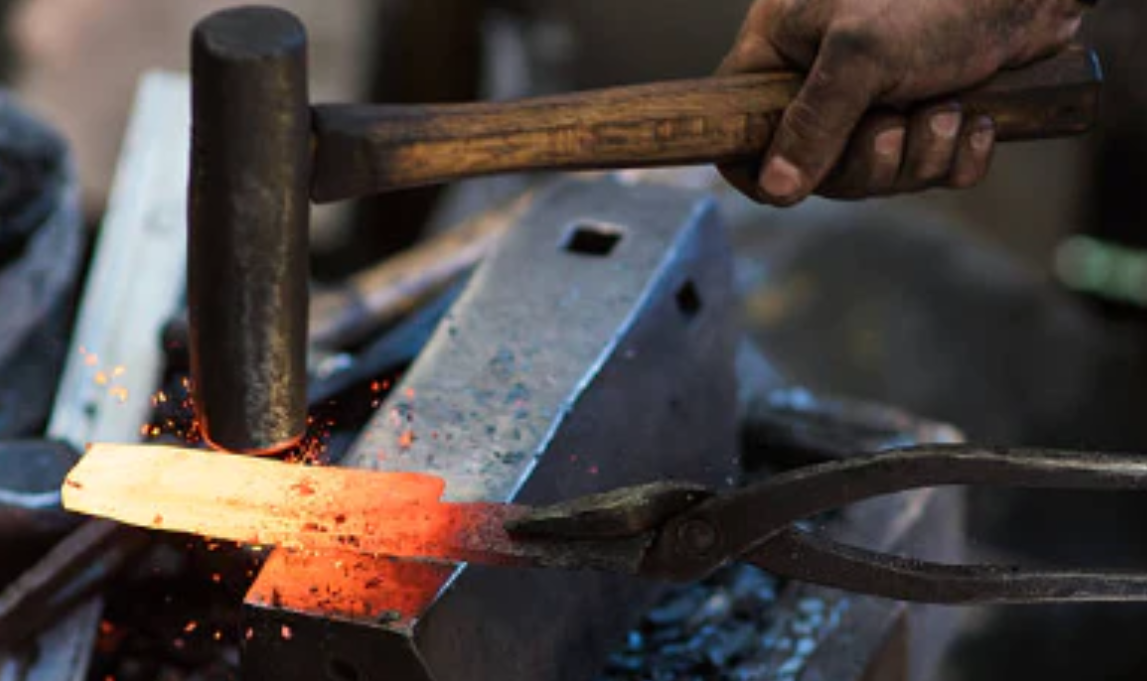
The Relationship Between Mirror Polish and Rust Resistance — Not Just for Looks
-
-
May 25, 2025
-
In the world of knives, a mirror polish is more than just an aesthetic choice. Finishing the surface of the blade to a mirror-like smoothness has a practical benefit as well: it can help reduce rust formation.
-

-
A Smoother Surface Means Less Moisture Retention
Rust occurs when water or acids linger on the blade’s surface and cause oxidation. A mirror finish significantly reduces microscopic grooves and grind marks, creating a surface that is exceptionally smooth. This allows water droplets and residue to slide off more easily, preventing them from sticking and triggering corrosion.
-
Not All Steels Benefit Equally from a Mirror Finish
The effectiveness of mirror polishing in rust prevention varies depending on the steel type. Let’s take a closer look:
-

Carbon Steels: White #1, White #2, Blue #1, Blue #2
These high-carbon steels, often called "hagane," are extremely prone to rust. They contain little to no chromium or rust-resistant elements. While a mirror finish can make the surface smoother and slightly slow down rust formation, it cannot prevent rust entirely.
These knives require vigilant maintenance—thoroughly drying them after use and applying a light coat of oil is essential.
White steels are known for their ease of sharpening and clean cutting edge, while blue steels, with added elements like chromium and tungsten, retain sharpness a bit longer. However, both remain highly susceptible to rust, regardless of surface finish.
-

Stainless Steels: Ginsanko, VG10, Powdered Steels, etc.
Stainless steels contain a high amount of chromium, which makes them naturally resistant to rust. When combined with a mirror finish, their rust resistance improves even further, allowing them to handle small amounts of moisture without immediate damage.
This makes them much easier to care for on a daily basis. However, keep in mind that no steel is truly rust-proof—neglect can still lead to corrosion over time.
-
Mirror Polish: Its Benefits and Limitations
Mirror polishing is not just for visual appeal—it’s a functional technique that can help reduce rust. But it's important to understand that it does not eliminate rust risk, especially with high-carbon steels.
Even the most beautiful mirror finish won’t stop corrosion if the blade is neglected. In other words, a mirror finish is a supportive measure, but daily maintenance is still crucial.
-
Should You Choose Mirror Finish?
Whether or not to opt for a mirror-polished blade depends on your usage environment, the type of steel, and your willingness to maintain the knife.
- If you’re committed to careful upkeep, carbon steel + mirror polish will reward you with top-tier performance and aesthetics.
- If you value ease of maintenance, stainless steel + mirror polish offers the best balance of practicality and beauty.
In the end, mirror finishing combines beauty and functionality. When you understand both its benefits and limitations, you'll be in a better position to choose the knife that truly suits your needs.
The Science of Shine: A Knife’s Mirror Finish Explained
-

A mirror finish reduces rust by repelling moisture, but it is not a perfect solution.
Choosing the right knife requires balancing aesthetics, material science, and maintenance. -
Mirror Polished
-
Step into the refined world of Japanese craftsmanship with mirror-polished kitchen knives.
This traditional finishing method, inspired by samurai swords and perfected over generations in Sakai, Japan, brings together elegance, durability, and precision. -

Mirror Polished Knives
Finished to perfection by master craftsmen, these blades shine with a flawless mirror surface. More than beauty, the polish reflects centuries of Sakai tradition and skill. At KIREAJI, we honor this heritage and invite you to experience its brilliance in every cut.

The Soul of Craftsmanship
-
Mirror-Polished Knives — Where Beauty Meets Purpose
A mirror-polished knife is often mistaken as mere decoration. But for us craftsmen, it carries a deeper meaning.
When steel is polished until it gleams like glass, the surface becomes so smooth that moisture and residue slide away, reducing the risk of rust. This is especially important for carbon steels, which deliver unmatched sharpness yet are highly vulnerable to corrosion.
Of course, a mirror finish does not make a knife rust-proof. Daily care—thorough drying after each use—remains essential. With proper attention, the brilliance of the polish becomes both protection and pride. -
For the craftsman, mirror polishing is more than a technique. Every scratch must be erased by hand, one after another, until the blade reveals its true glow. It is slow, deliberate work, but when complete, the knife reflects not just light, but the spirit of its maker.
A mirror-polished knife is therefore more than beauty. It is function, resilience, and the heart of craftsmanship—shining through every cut.

Experience the sharpness trusted by 98% of Japan’s top chefs — handcrafted in Sakai City.
Through our exclusive partnership with Shiroyama Knife Workshop, we deliver exceptional Sakai knives worldwide. Each knife comes with free Honbazuke sharpening and a hand-crafted magnolia saya, with optional after-sales services for lasting confidence.
KIREAJI's Three Promises to You
-

1. Forged in the Legacy of Sakai
From Sakai City—Japan’s renowned birthplace of professional kitchen knives—each blade is crafted by master artisans with over six centuries of tradition. Perfectly balanced, enduringly sharp, and exquisitely finished, every cut carries the soul of true craftsmanship.
-

2. Thoughtful Care for Everyday Use
Every knife includes a hand-fitted magnolia saya for safe storage. Upon request, we offer a complimentary Honbazuke final hand sharpening—giving you a precise, ready-to-use edge from day one.
-

3. A Partnership for a Lifetime
A KIREAJI knife is more than a tool—it is a lifelong companion. With our bespoke paid aftercare services, we preserve its edge and beauty, ensuring it remains as precise and dependable as the day it first met your hand.








